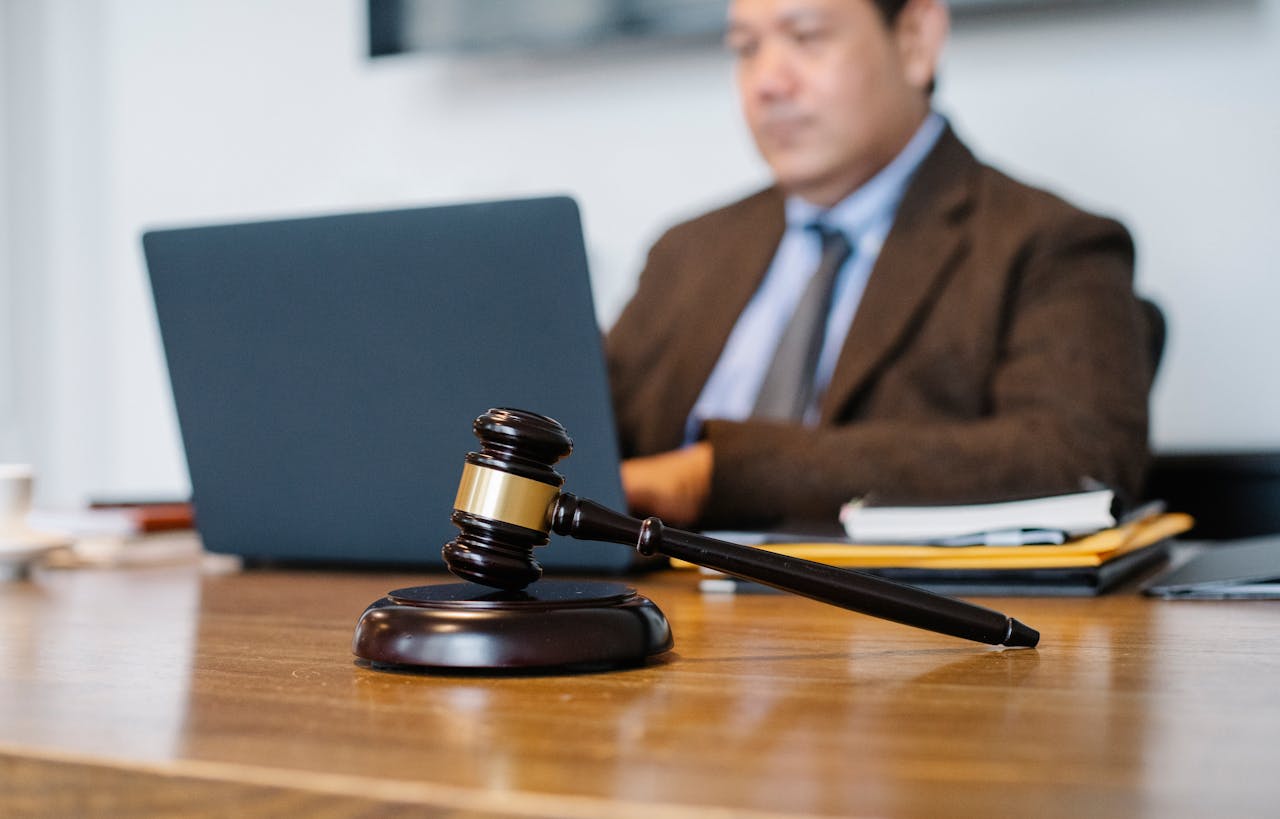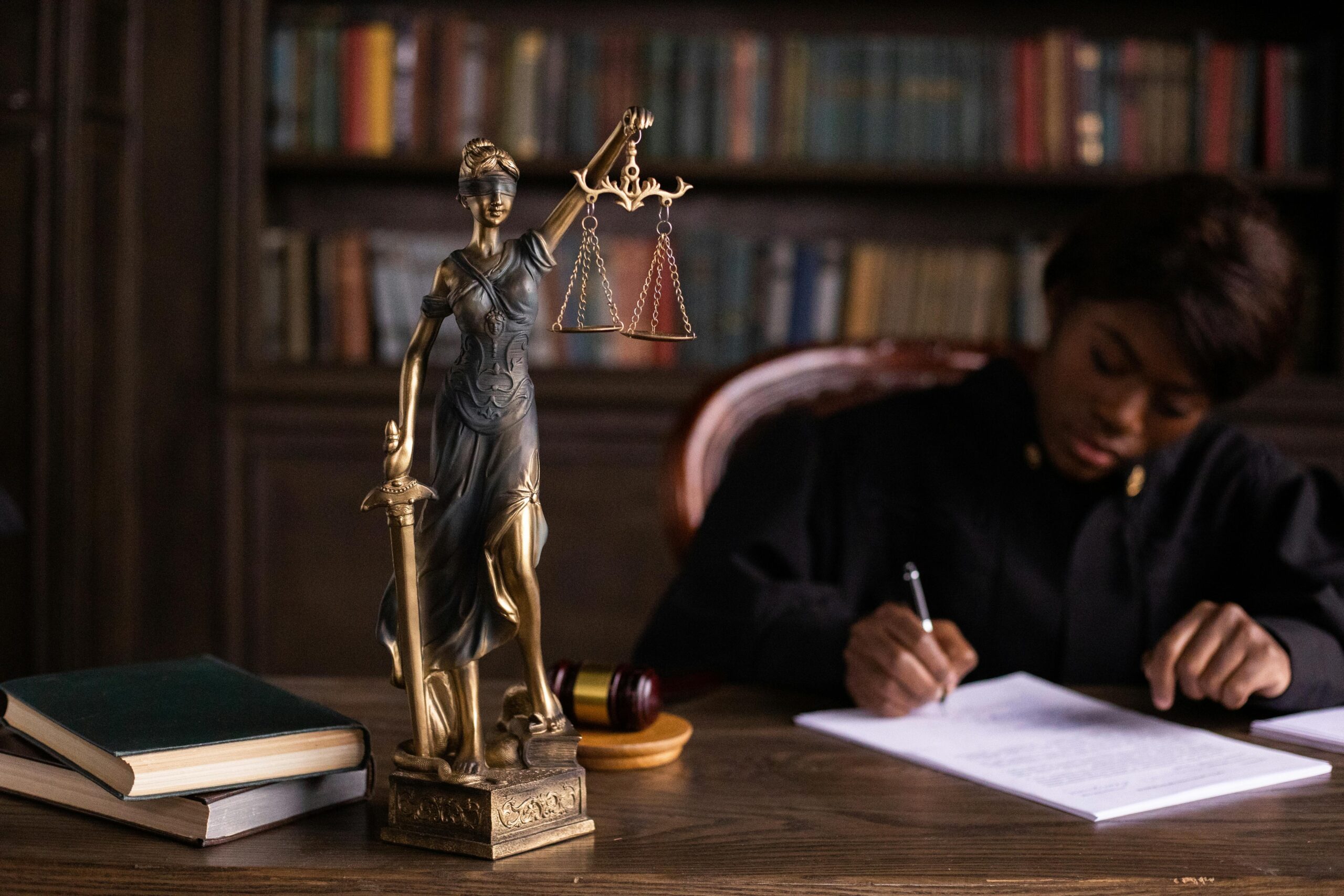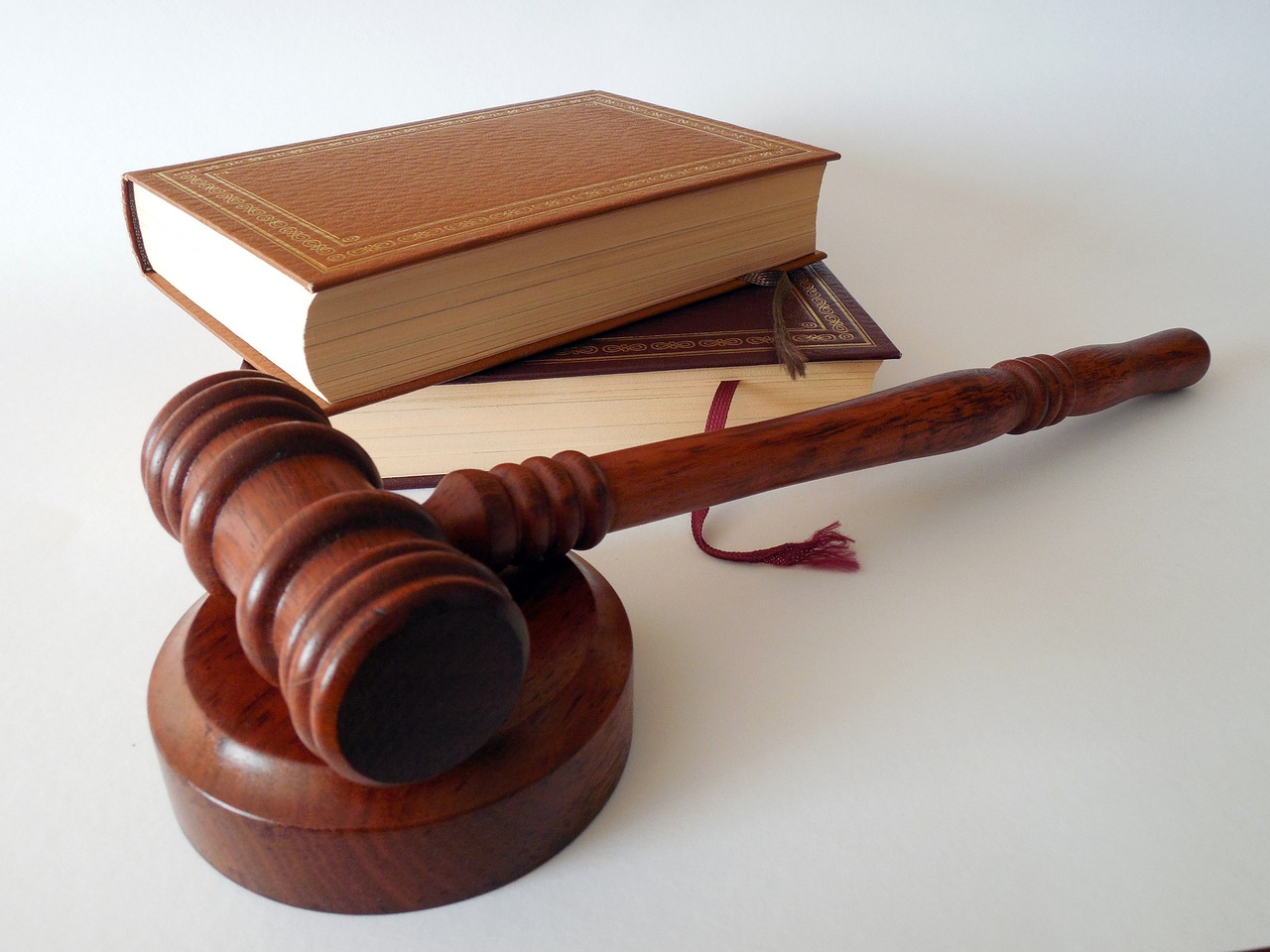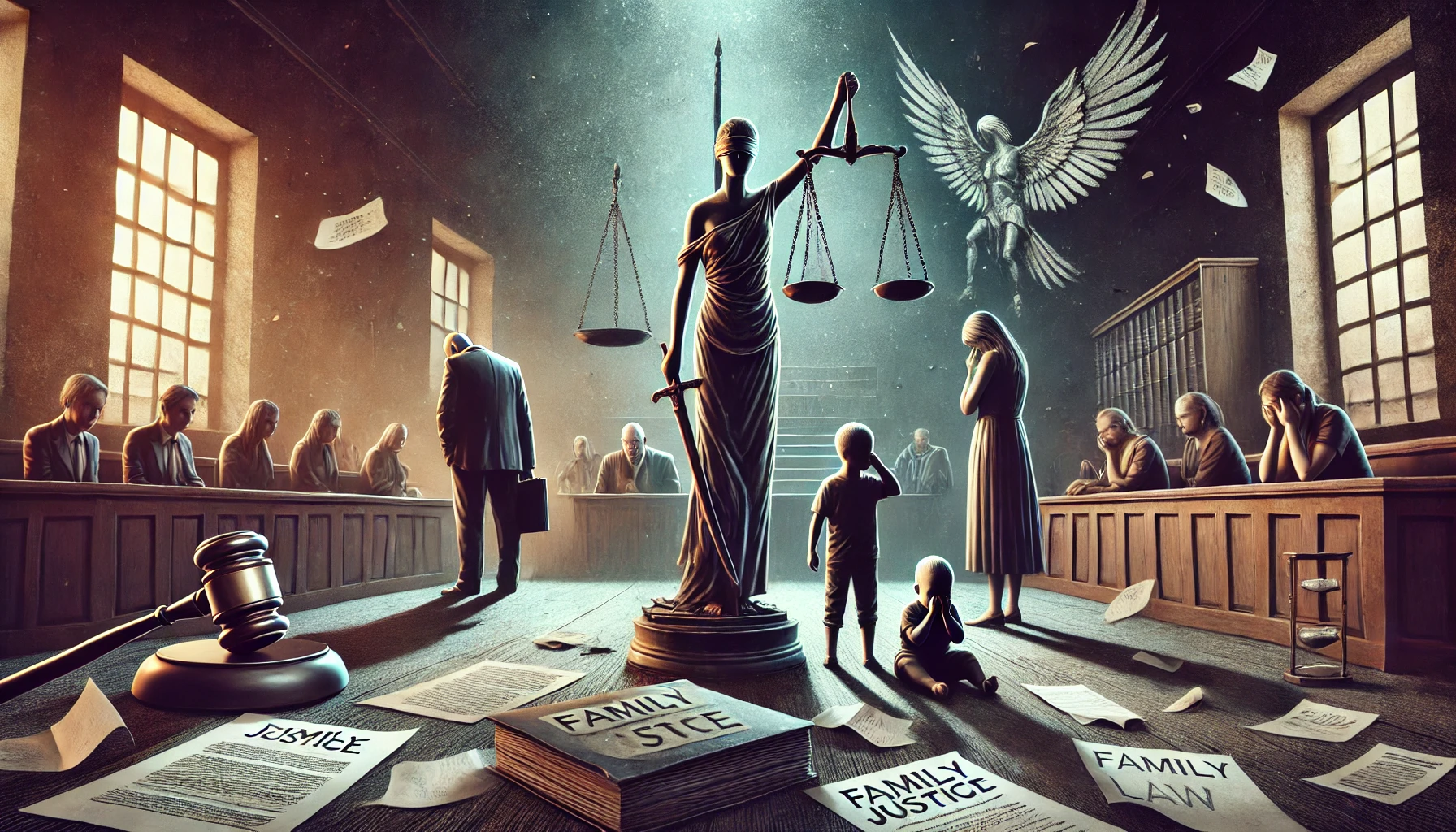Authored By: Zainab Khan
Atal Bihari Vajpayee School of Legal studies.
Abstract
India’s juvenile justice system plays a crucial role in safeguarding children’s rights while tackling juvenile delinquency through care, protection, and rehabilitation methods. This paper explores the development and current status of juvenile justice laws in India, highlighting significant milestones from the Children Act of 1960 to the Juvenile Justice (Care and Protection of Children) Act of 2015. It examines the constitutional and legal protections for children, emphasizing the need to balance rehabilitative and punitive measures. The research also identifies numerous challenges, including insufficient infrastructure, a lack of trained personnel, and limited awareness among stakeholders, which hinder the system’s effectiveness. Through an analysis of legal frameworks, case law, and policies, the study suggests that collaborative actions involving the government, judiciary, and civil society are essential to enhance the responsiveness and effectiveness of the juvenile justice system in protecting the rights and welfare of children in conflict with the law.
Introduction-
“Darkness cannot drive out darkness; only light can do that. Hate cannot drive out hate; only love can do that.” – Martin Luther King, Jr.
A critical issue in juvenile justice is whether to treat young offenders with punitive measures or focus on their rehabilitation. Sentencing in criminal cases usually revolves around three main principles: punishment (retribution), deterrence, and rehabilitation. When it comes to juvenile offenders, rehabilitation often takes priority.
Historically, even Roman law recognized the principle of “doli incapax,” which shielded young children from prosecution, assuming they lacked the maturity and understanding to be held criminally liable. The modern rehabilitative approach in juvenile justice emphasizes counseling,
supervision, work programs, training, cognitive therapy, and behavioral interventions, all aimed at changing behavior and reducing repeat offences.
In India, the law does not classify young offenders based on the nature of their crimes for the purpose of punishment. Instead, in a civilized society, child welfare is considered paramount. Children are the nation’s most valuable asset, and the State is responsible for protecting them from abuse and exploitation. It is essential for the State to ensure their growth and development.
To safeguard children from various forms of abuse and neglect, the government has enacted several laws addressing juveniles. Additionally, the State has established special courts and boards to oversee the implementation of these laws. Judicial interpretation of these provisions has significantly advanced juvenile justice, showing a deep commitment to ensuring that beneficial legal protections for children are effectively applied.
In recent years, there has been a noticeable rise in crimes committed by children aged 15 to 16. Several factors contribute to this trend, including early life experiences, societal norms around masculinity, family background, financial hardships, and lack of education. Alarmingly, children as young as 6 to 10 years old are now being exploited as tools to carry out illegal activities. Due to their innocence and malleability, young children are particularly vulnerable to being enticed into crime for minimal rewards.
One case that shocked the nation was the Nirbhaya Delhi gang rape 1 on December 16, 2012, which sparked intense debates among legal experts and social activists. Central to this discussion was the involvement of one accused who was just six months short of turning 18. His participation in such a heinous crime compelled the Indian Parliament to enact the Juvenile Justice (Care and Protection) Act, 2015.
Development of the Juvenile Justice System in India
The evolution of the juvenile justice system in India reflects the country’s growing understanding of the unique needs of young offenders, with the system going through several key phases:
In 1920, the establishment of India’s first juvenile court in Bombay (now Mumbai) under the Children Act of 1920 marked a significant milestone. This law recognized that children under 16 years needed special care and support, leading to a separate judicial mechanism for handling cases.
A major step forward came in 1986 with the Juvenile Justice Act, which replaced the earlier law. This new Act acknowledged that juveniles in conflict with the law were not to be treated as regular criminals but rather as individuals needing rehabilitation and protection. It introduced the concept of Juvenile Welfare Boards to implement the Act and established observation homes to provide temporary shelter for children awaiting legal proceedings.
In 2000, the Juvenile Justice Act was amended to align with the United Nations Convention2 on the Rights of the Child. This amendment3raised the age limit for juvenile offenders from 16 to 18 years, underscoring the importance of rehabilitation and reintegration into society.
Another critical change came in 2015, spurred by the 2012 Delhi gang rape case4(often referred to as the Nirbhaya case). This amendment introduced a provision allowing juveniles aged 16 to 18 to be tried as adults in cases of heinous crimes such as rape and murder, while still maintaining a focus on rehabilitation and reintegration for other offenses.
The 2021 amendment further strengthened India’s commitment to a robust juvenile justice system. It introduced measures for foster care and adoption for children in urgent need of support. It also emphasized the comprehensive rehabilitation and reintegration of juvenile offenders and enhanced the roles of Juvenile Justice Boards and Child Welfare Committees in the decision-making process.
Definition of juvenile:
The term “juvenile” comes from the Latin word “Juvenis,” which means young. According to the J.J.A,2015 A juvenile is defined as a child under the age of 18.5 A child who is considered too immature to fully understand the difference between right and wrong. In modern times, the criminal laws of most countries recognize the principle of “doli incapax,” which means that a child is presumed incapable of forming the necessary criminal intent to be held legally responsible for an offense.
Who is a “child in conflict with law”?
A “child in conflict with law”6refers to a child who has been accused of or has been found to have committed an offence and who was under 18 years of age at the time the offence was committed. From this definition, it’s clear that anyone under the age of 18 is considered a minor.
This age-based classification means that minors are often completely exempted from criminal liability, regardless of the severity of the offence, their maturity level, or their behavior.
Juvenile Delinquency
Juvenile delinquency refers to instances when a minor engages in behavior that violates the law. It generally involves a single, specific act committed by someone under the age of eighteen. Such conduct is often labeled as “delinquency.” Once a person becomes an adult, the same act might be classified as a crime. Therefore, even children and teenagers may see their behavior as criminal.
This issue has existed throughout history. Delinquency arises when an individual knowingly chooses to disobey laws, whether through defiance, rebellion, or recklessness. Even though a child may seem innocent, exposure to difficult circumstances—such as a lack of basic needs or negative influences—can push them toward criminal behavior. Typically, breaking the law implies an intention to violate it, though that’s not always the case.
The principle that “ignorance of the law is no excuse” means that even if someone is unaware of a law, they can still be held accountable. As a result, juveniles are often treated differently in the justice system, given a chance to be excused for their lack of legal knowledge.
If an act is not explicitly defined as a crime in the law, it isn’t considered an offense. Some offenses, like theft or physical harm, are universally condemned, which prompts legal action against the offender.
In the case of Pratap Singh v. State of Jharkhand,7the Supreme Court examined the issue of whether the date of the incident or the date the accused is brought before the court should be used to determine if the accused is a juvenile. The Court ruled that the age of the accused should be calculated based on the date the crime occurred, not the date of their appearance in court.
In the Shyam Narayan Singh v. State of Bihar,8 Patna High Court confirmed that the age of a juvenile accused should be established using the age mentioned in the evidence submitted before the Magistrate, and this evidence was accepted as reliable.
Factors Leading to Juvenile Delinquency:
Domestic Violence
One of the most common and significant causes of juvenile crime is violence within the home. A child’s home environment shapes who they become, and if they are exposed to violence, they are likely to adopt similar behaviors themselves. Often, children in such situations are confused about the reasons for the violence they endure and feel powerless to protect themselves. This confusion can manifest in minor offenses like shoplifting or traffic violations, but in some cases, it can escalate into more serious crimes that reflect their pent-up anger.
Note: It’s important to distinguish between abuse and violence—abuse can be psychological, physical, or emotional, and often leads to juvenile delinquency.
Lack of Moral Guidance and Supervision
Another major contributor to the rise in juvenile crime is the lack of a consistent caregiver or parent. Many children involved in such cases come from households where parents face their own challenges and fail to provide adequate supervision or support. Children learn the difference between right and wrong at home, and without a positive role model, they are more likely to make poor choices.
Additionally, the media plays a big role by exposing children to various influences through television and online content. Without proper guidance, children often emulate what they see, drawn to the thrill of it without understanding the consequences.
Poor Educational Standards
A quality education can instill discipline and guidance in young people, but many underfunded and overcrowded schools lack the necessary structure. In such chaotic environments, children may feel compelled to take matters into their own hands to protect themselves.
Substance Abuse
Exposure to substances either within the home or in their environment is a key reason why some children struggle to function normally in society. This exposure often leads to dependency, causing them to seek harmful ways to satisfy their cravings. Many of these youths end up committing crimes they might not have otherwise considered.
Peer Influence
After the family environment, a child’s social circle has the most significant impact. When parents are overly controlling, children may seek out the wrong friends as a way to rebel and feel a sense of freedom. On the other hand, when parental guidance is lacking, children might gravitate towards groups that offer them a sense of belonging and security—even if those groups engage in harmful behaviors.To fit in with their chosen peer group, these children may feel pressured to participate in activities like drug use or criminal behavior.
Economic Disadvantage
While crime occurs in all communities, areas with high poverty rates see higher instances of juvenile delinquency. Children in these neighborhoods often resort to stealing or getting into violent fights because they see it as necessary for survival. By providing quality education and meeting their basic needs, these children may be less likely to engage in criminal activities just to get by.
JUVENILE JUSTICE ACT, 2015
The Juvenile Justice Act of 2015 replaced the earlier 2000 Act9n response to the need for a stronger and more effective justice system that emphasizes both deterrence and rehabilitation. Recognizing that juveniles should be treated differently than adults, Parliament debated that they should have greater opportunities for transformation and rehabilitation, achievable only through a dedicated justice framework. Consequently, the new law — the Juvenile Justice (Care and Protection of Children) Act, 2015 — adopted a child-centric approach to the adjudication and resolution of juvenile matters.
Key Features:
- 1. Definition of Child (Section 2(12)): A child is defined as anyone under the age of 18. The Act distinguishes between a “Child in Need of Care and Protection” and, under Section 2(13), a “Child in Conflict with Law.”
- Classification of Offences: The Act introduces clear categories for offences: heinous, serious, and petty. It also provides that juveniles aged 16-18 who commit certain offences may, after an assessment of their mental maturity, be tried as adults.
- Establishment of Juvenile Courts: The Act mandates the creation of special courts to handle cases involving juveniles, similar to specialized courts like those for NDPS and POCSO cases.
- Expanded Definition of ‘Child in Need of Care and Protection’ (Section 2(14)): The Act broadens this definition to include, among others:
Children whose parents or guardians are unfit or unwilling to care for them. Children found working in violation of labor laws.
Children at risk of child marriage.
The Act also defines adoption and clarifies the rights of adopted children.
The Act seeks to bring together all laws concerning children who are either accused of breaking the law or in need of care and protection. It aims to address their basic needs by ensuring appropriate care, protection, development, treatment, and social integration, all while maintaining a child-friendly approach in legal proceedings and decisions that prioritize the best interests of the child. Additionally, the Act emphasizes the rehabilitation of juvenile offenders using various childcare facilities and institutions. The key elements of the Act include:
CLAIM OF JUVENILITY
One of the most debated issues among legal experts and social advocates is the concept of “claim of juvenility.” This claim is determined by the Juvenile Justice Board, which must consider it before any court proceedings begin. However, this claim can be raised at any stage during the trial or even after the Board has disposed of the matter. The Board is required to follow Rule 12 of the Juvenile Justice Rules, 2007 when deciding on the claim of juvenility.
In Kulai Ibrahim v. State of Coimbatore,10 the court recognized that an accused has the right to raise the question of juvenility at any time during the trial or even after the case has been concluded, in accordance with Section 9 of the Juvenile Justice Act, 2015.
In Deoki Nandan Dayma v. State of Uttar Pradesh,11 the court held that a school register entry indicating the date of birth of a student is acceptable evidence to determine whether the accused is a juvenile or a child.
Similarly, in Satbir Singh & Others v. State of Haryana,12 the Supreme Court reaffirmed that the date of birth recorded in school documents should be considered by the Juvenile Justice Board in assessing whether the accused is a juvenile.
In Krishna Bhagwan v. State of Bihar,13 the court ruled that, for proceedings before the Juvenile Justice Board, the relevant date for determining juvenility is the date on which the offence was committed.
However, in Arnit Das v. State of Bihar,14 the Supreme Court later overturned its earlier stance, holding that the date for determining the claim of juvenility should be the date the accused is brought before the competent authority.
JUVENILE JUSTICE BOARD
A Board must be constituted to conduct inquiries and hearings for cases involving juveniles accused of breaking the law. This Board includes a Principal Magistrate and two social workers, with at least one of them being a woman. According to the Act, the Board cannot function from regular court premises under any circumstances, and the decisions made by the Principal Magistrate are considered final.
Special Procedures of the Juvenile Justice Board:
The Act lays out specific procedures for handling cases involving juvenile offenders: 1. Proceedings cannot be initiated based on a complaint filed by the police or any individual citizen. 2. Hearings should be informal and strictly confidential.
- Juveniles held in custody should be kept in an Observation Home.
- Trials involving juveniles should be conducted by a Lady Magistrate.
- When the Board is not in session, a child in conflict with the law can be presented before an individual Board member.
JUVENILE JUSTICE AND THE CONSTITUTION OF INDIA
The Constitution of India serves as the supreme law of the country, outlining the rights and duties of its citizens and establishing the framework for government functions. Part III of the Constitution enumerates the Fundamental Rights, while Part IV sets out the Directive Principles of State Policy (DPSPs), which guide the government in creating policies.
The Constitution includes specific provisions to safeguard the welfare of children, such as: The right to free and compulsory education for children aged 6 to 14 years (Article 21A). The right to be protected from hazardous work until the age of 14 (Article 24). The right to be shielded from any form of abuse by adults (Article 39(e)).
The right to protection from human trafficking and forced labor (Article 39). The right to proper nutrition and an adequate standard of living (Article 47).
Article 15(3) empowers the State to enact special laws for the advancement and welfare of women and children.
While drafting the Juvenile Justice Act, 2015, lawmakers considered these constitutional guarantees to ensure the protection of children’s rights in every way possible. This is why Chapter IV of the Act outlines measures for the welfare of juveniles, emphasizing their reformation and rehabilitation in all circumstances.
PROVISIONS RELATING TO JUVENILES
Despite the long history of juvenile law — starting from the Children Act, 1960, followed by the Juvenile Justice Acts of 1986, 2000, and 2015 — the Government of India, through Parliament, has also passed various social legislations at different times to ensure the protection and development of children. These include:
- The Guardian and Wards Act, 1890.
- The Factories Act, 1948, which regulates the employment of children aged 14 to 18. 3. The Hindu Adoption and Maintenance Act, 1956.
- The Probation of Offenders Act, 1958.
- The Bombay Prevention of Begging Act, 1959.
- The Orphanages and Other Charitable Homes (Supervision and Control) Act, 1960, which oversees orphanages and similar institutions and aims to curb criminal activities within them.
- The National Policy for Children, 1974.
- The Child Marriage Restraint Act, 1929, which aims to prevent child marriage. 9. The Immoral Traffic (Prevention) Act, 1956, targeting the trafficking of women and girls.
- The Child Labour (Prohibition and Regulation) Act, 1986, banning child labour in certain occupations and processes.
- The National Policy on Child Labour, 1987.
- The SC/ST (Prevention of Atrocities) Act, 1989.
- The Young Persons (Harmful Publications) Act, 1956, which seeks to prevent the spread of harmful publications to young people.
- The Prevention of Illicit Traffic in Narcotic Drugs and Psychotropic Substances Act, 1987.
- The Infant Milk Substitutes, Feeding Bottles and Infant Foods (Regulation of Production, Supply and Distribution) Act, 1992, and its Amendment Act of 2003.
- The National Nutrition Policy, 1993.
- The Transplantation of Human Organs Act, 1994
- The Pre-natal Diagnostic Techniques (Regulation and Prevention of Misuse) Act, 1994. 19. The Information Technology Act, 2000.
- The Persons with Disabilities (Equal Protection of Rights and Full Participation) Act, 2000.
- The National Health Policy, 2002.
- The National Charter for Children, 2004.
- The National Plan of Action for Children, 2005.
- The Commission for the Protection of Child Rights Act, 2005.
- The Prohibition of Child Marriage Act, 2006.
Despite all these laws, the situation of juveniles remains dire across many dimensions. Education, nutrition, health, and the socio-economic conditions of juveniles are still far from satisfactory. The gap in addressing these issues remains a major concern in current studies on juveniles.
CONCLUSION
India, as a developing country, is continuously evolving its legal framework. Recently, there has been an increase in public anxiety about criminals who act without restraint, largely due to shortcomings within the juvenile justice system. While Indian law recognizes the idea of a juvenile or child involved in legal disputes, it tends to overlook the distinct concept of an innocent child who comes into conflict with the law. The juvenile justice system in India plays a crucial role in safeguarding children’s rights and promoting their healthy development. Its primary focus is to prevent juvenile delinquency while offering care, protection, and rehabilitation to children who come into conflict with the law. Despite its importance, the system faces several challenges, such as inadequate infrastructure, shortage of trained staff, overcrowded juvenile homes, and limited awareness among key stakeholders. To overcome these issues, coordinated efforts from the government, civil society, and judiciary are essential to make the juvenile justice system more efficient and better equipped to achieve its goals.
REFERENCE(S):
Book
The Constitution of India
“The Indian Penal Code 1860
The Juvenile Justice (Care and Protection of Children) Act, 2000
The Juvenile Justice (Care and Protection of Children) Act 2015
Newspaper –
“The Times of India”
“The Indian Express”
Journals-
“Study of Juvenile Justice System” IJNRD
“Evolution of Juvenile Justice Legislation in India: A Critical Analysis” [2021] “Revisiting The Juvenile Justice System in India: A Bird’s Eye View” – Journal of Language and Linguistic Study
Websites –
https://timesofindia.indiatimes.com
https://lawbhoomi.com
https://articles.manupatra.com
https://lawctopus.com/clatlogue/clat-pg/juvenile-justice-system-in-india-evolution-and-defectj
1 Mukesh & Anr. v. State for NCT of Delhi & Ors., (2017) 6 SCC 1.
2 The UN Convention on the Rights of the Child, specifically the 1989 convention
3 The Juvenile Justice Act, 2015 Act (JJ Act)
4 Mukesh & Anr. v. State for NCT of Delhi & Ors., (2017) 6 SCC 1.
5 Section 2(35), the Juvenile Justice (Care and Protection of Children) Act, 2015
6 Section 2 (l3) of the Juvenile Justice (Care & Protection of Children) Act, 2015
7 Pratap Singh v. State of Jharkhand, (2005) 3 SCC 551
8 Shyam Narayan Singh v. State of Bihar, (1991) 2 SCC 408.
9 The Juvenile Justice (Care and Protection of Children) Act, 2000
10 Kulai Ibrahim v. State of Coimbatore, AIR 1960 Mad 309
11 Deoki Nandan Dayma v. State of Uttar Pradesh (1997) 3 SCC 525
12 Satbir Singh v. State of Haryana (2021 SCC Online SC 404)
13 Krishna Bhagwan v. State of Bihar, AIR 1989 PAT 217.
14 Arnit Das v. State of Bihar, (2000) 9 SCC 471, (2001) 1 SCR 103.





